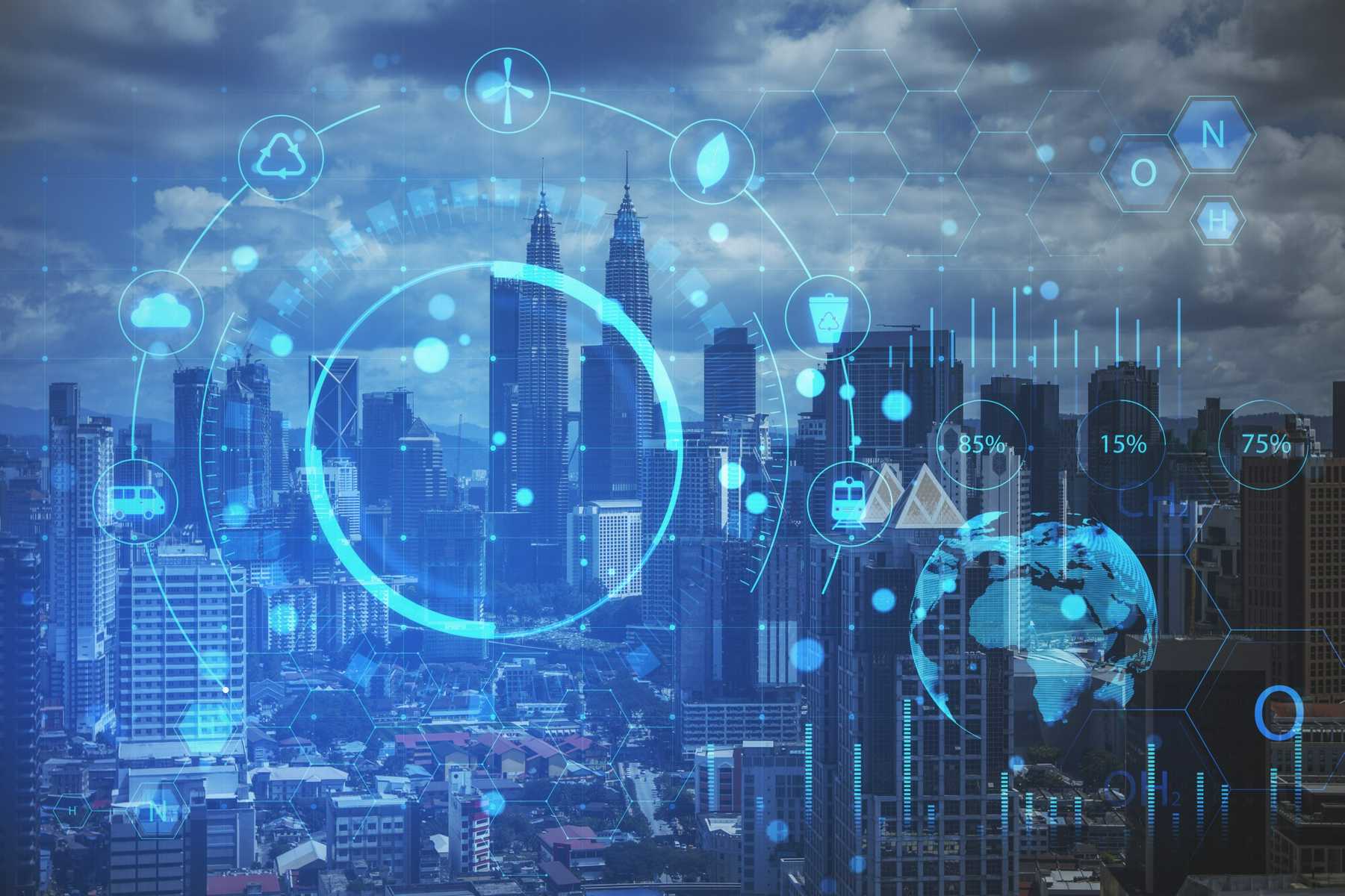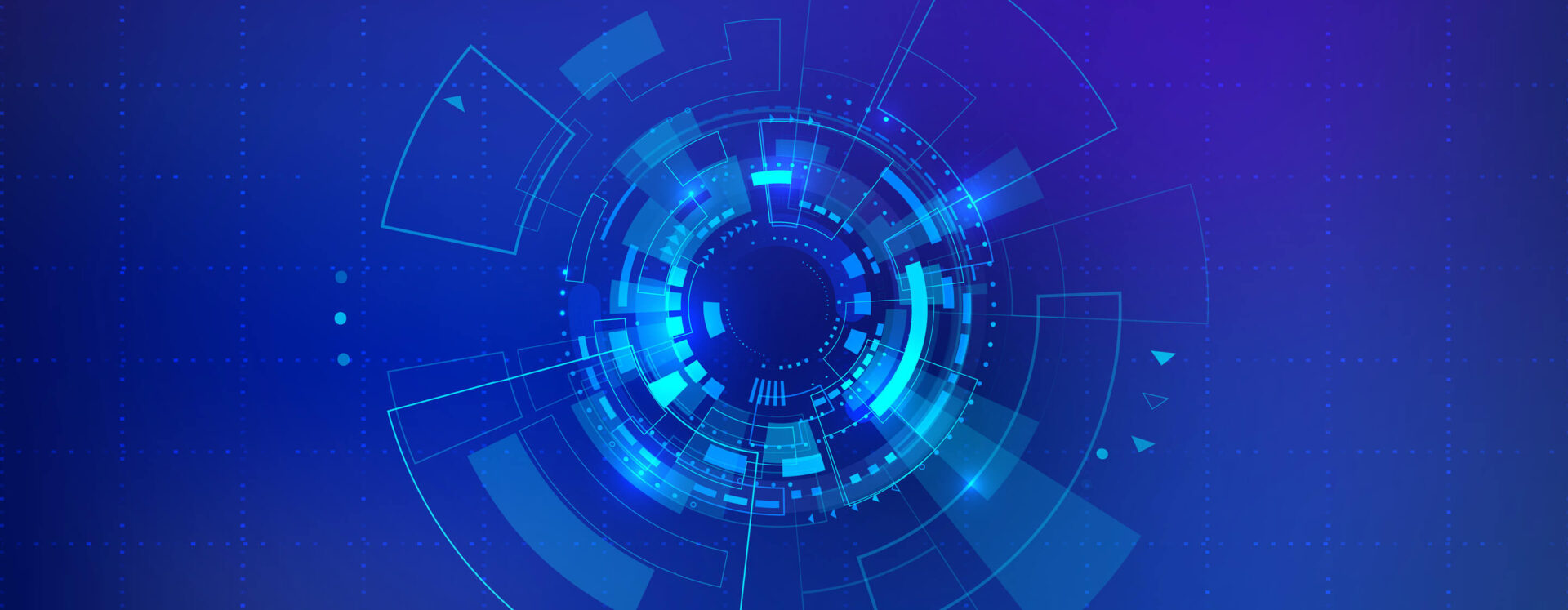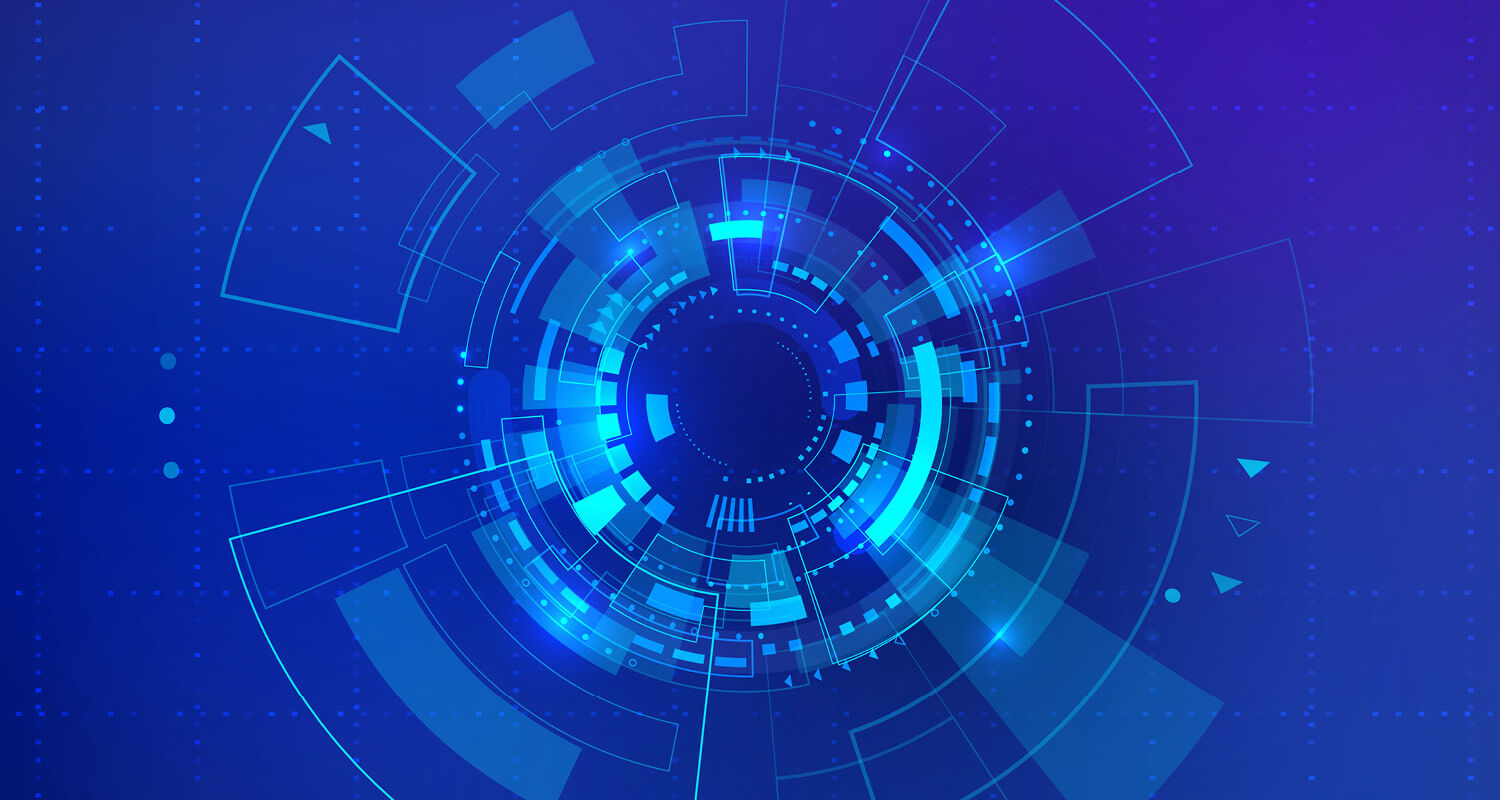
A digital ecosystem is a combination of technologies that allow you to access information in real time. It’s a big buzzword today, but it’s not a new concept.
The first digital ecosystems were built around the turn of the 20th century by British scientist Dr Alexander Graham Bell, the inventor of both the telephone and the fax machine. Since then, digital ecosystems have grown exponentially and become an essential part of our everyday lives – whether we realise it or not! But what exactly is a digital ecosystem, and how do companies utilise them?
Here are the key facts you need to know about building digital ecosystems.
- What is a digital ecosystem?
- Who uses digital ecosystems?
- The history of digital ecosystems
- The technical aspects of digital ecosystems
- How can your company make use of digital ecosystems?
- The future of digital ecosystems
- How to build and maintain a digital ecosystem
1. What is a digital ecosystem?
A digital ecosystem is complex network of people, businesses, and systems that use technology to interact with one another. Such digital ecosystems are significantly different from traditional business ecosystems. This is because they take advantage of physical layers (devices), the information layers (data), and the application layers (apps) to communicate effectively with one-another.
Building successful digital ecosystems typically involves a combination of elements and will likely utilise technology to collect data from customers, such as an app, or point-of-sale (POS) system. The benefits of a connected ecosystem can be significant, however typically these help companies to to develop new products, deliver services and create new customer experiences.
The key difference here is that digital ecosystems go beyond just having multiple devices or apps connected. They allow companies to leverage all three layers simultaneously for their customers’ interactions with each other to take place seamlessly over time.
Traditional strategic thinking typically relies upon command and control, with established metrics and layers of decision-making that can deter innovation and change. In today’s hyper-connected world, where digital ecosystems are central to many strategies, companies may need to surrender some control so that they can partner with other stakeholders in a decentralized network. This approach rewards innovation, promotes resilience and encourages businesses to respond rapidly to change.
Learn how to harness the power of Digital Ecosystems – watch our webcast »
2. Who uses digital ecosystems?
Digital ecosystems can be used by anyone and everyone. These days most companies need to employ digital ecosystems of some kind just to function normally. There are a wide-range of real-world examples of successful digital ecosystems, which can typically be classified under one of the following:
Companies using digital ecosystems
To build a digital ecosystem, you first need to be able to identify your customers’ needs. This is typically done in answer to an existing problem, or by utilizing data to identify trends.
Often to support commercial growth and create more engaging customer experiences many organizations across the world deploy digital ecosystems within their technology stack. Clear examples point to Meta (formerly Facebook) and their platform infrastructure including the likes of Facebook, Instagram and Whatsapp, or Amazon and Amazon Web Services for example.
Once you have an idea of what kind of tools your company needs, it’s time for development. In many ways, a digital ecosystem is similar to a business ecosystem. This is because it allows business owners to increase their revenue through increased efficiency.
Government agencies
Government agencies are also starting to use digital ecosystems as part of their efforts toward transparency and accountability. For example, the European Union has created an open-source platform called MyData.
This gives citizens access to their data so they can see how it’s being used or sold. This is crucial to ensure nobody has their privacy laws like GDPR violated.
Individuals using ecosystems
What if you want better healthcare options in your community? However, you don’t know where else besides hospitals themselves might offer them. Then creating a mobile app could help solve this problem.
This is because now people can easily access information about different providers. They can offer certain services near them using mobile devices – even if they don’t have internet access at home.
Have you experienced these examples? Perhaps you have but have never particularly noticed, digital ecosystems are everywhere these days and often underpin many of the day-to-day services we might take for granted.
3. The history of digital ecosystems
As we identified earlier in the article, digital ecosystems are nothing new, with the earliest iterations coming to life in the early 20th century, the idea that information technology systems can be integrated to deliver more value is as old as computing itself.
The concept of more digital ecosystems emerged in the early 2000s, drawing inspiration from natural ecosystems along with the exponential rise in internet connectivity. These digital ecosystems are complex networks of interconnected digital tools, platforms, and services that work together to create a cohesive and adaptive environment.
The history of digital ecosystems is a story of how they’ve evolved. It’s also a story of how they’re becoming more complex while also integrating with other new technologies. Artificial intelligence or big data analytics platforms are two newer technologies that have opened up extensive possibilities to expand and optimize digital ecosystems.
Today, digital ecosystems are essential in various industries, from entertainment to healthcare, providing integrated and real-time experiences for users. Companies like Apple and Google have built extensive ecosystems that allow users to move effortlessly between devices and services, enhancing convenience and functionality. The continuous growth and adaptation of digital ecosystems highlight their importance in the modern digital landscape.
But what do digital ecosystems look like? How can they be used to create more value for customers and businesses alike? And how can you successfully create a digital ecosystem that will stand the test of time?
4. The technical aspects of digital ecosystems
A digital ecosystem is a set of technologies that work together to provide you with information. It’s like a network of digital devices that work together to provide you with information. The term “digital ecosystem” is used to describe the combination of technologies. They work together to provide you with information.
A centralized database provides the foundation for your company’s digital ecosystem
A central part of building a digital ecosystem is a centralized database. A centralized database is a single repository for all the information your digital ecosystem needs. Centralized databases are generally easier to manage. They are also more secure than distributed ones.
This is because no user has control over its data. A cloud-based database like Google Cloud or Amazon Web Services (AWS) can be used as a central point of entry into your company’s digital ecosystem.
Software as a Service (SAAS) allows your digital applications to share data via the cloud
SaaS is a model for delivering software as a service. SaaS applications are hosted by third-party providers and accessed over the internet, allowing users to pay only for what they use.
This makes it possible for companies to run large, complex digital ecosystems with less upfront capital investment and risk than traditional, on-premises solutions would entail.
APIs form the backbone of a digital ecosystem
APIs (Application Programming Interface) are the foundation of a digital ecosystem. APIs enable data to be shared across systems, which allows you to build new products and services that connect with existing ones. This creates an ecosystem in which every system has its unique strengths and weaknesses, but everything works together as part of a larger collective.
Digital ecosystems can be complex projects; it’s important to understand how they work before you begin building them out so that you can minimize the amount of time spent fixing problems later on.
Platforms integrate with other software and systems to help create an inter-connected ecosystem
A platform is a central hub that integrates with other software and systems to help create an interconnected ecosystem. Platforms provide the foundation for your digital ecosystem and are the glue that binds all the different parts together.
The most common examples of platforms include:
- ERP (enterprise resource planning) – an integrated system used by large organizations to manage their businesses from accounting to inventory management to sales and distribution
- CRM (customer relationship management) – software that helps you keep track of customers, leads, prospects, and sales opportunities in one place
- CMS (content management system) – websites or blogs where content can be added by users
You may also have heard about blockchain technology as a type of platform, although it doesn’t fit into this definition exactly because it’s not centralized like a typical platform would be.
Embedding technology adds value to your ecosystem
One of the core tenets of building a digital ecosystem is embedding technology in everyday items, which allows them to transmit information to add value to your ecosystem.
For example, RFID tags are a type of passive wireless tag that can be read at a distance using an RFID reader. This is commonly used for tracking inventory or items on store shelves, and it has become increasingly popular with consumers as well. A consumer who has an RFID chip embedded in their phone can walk past an item with an RFID tag on it (like their favorite brand of beer). They’ll receive a notification on their phone telling them how many bottles are left in stock at nearby stores.
This way, consumers don’t have to go through various websites before making purchases. Instead, they’re able to easily find out what’s available right there in front of them!
Other examples include small devices like smartwatches and fitness bands. These devices collect data about your activity levels throughout the day. They can send notifications based on how active you’ve been throughout the day. They also encourage overall health benefits. This includes increased exercise or reduced calorie intake from unhealthy foods consumed during social gatherings where alcohol is served.
5. How can your company make use of digital ecosystems?
You may be thinking, “How can my company make use of digital ecosystems?” You’re not alone. The concept of the digital ecosystem is still new. Many companies are unsure how it could benefit them. Nor are they sure what it would look like if they were to implement one. Digital ecosystems are being increasingly taught in MBA programs.
But don’t worry! Here’s a rundown on how you can build and manage a digital ecosystem.
Build your ecosystem by developing software tools that allow users to interact with each other through their phones or computers. For example, if your team works in the marketing department at a car dealership. Then you might create an app that allows customers to take pictures of vehicles they’re interested in buying.
They can send those images directly to sales representatives for review. This makes it easier for customers and employees alike. Why? Because there isn’t any back-and-forth emailing required. There is just one quick interaction between two people who need something from each other.
Data analysis tools help you organize and interpret the data flowing through your ecosystem
Data analysis tools are used to gather data from various sources, and then make sense of it. They can be used to create reports and visualizations, or they can be used to run analytics on the data.
When you have access to all of your organization’s data across a digital ecosystem, you need tools that can help you interpret all this information. Data analysis tools help you organize a vast amount of data. Particularly as it flows through your ecosystem into small chunks that are easy for humans to digest.
With these tools at hand, anyone in your team can look at their metrics. They can get a clear idea about how things are going in their area (or across the entire company).
Data analysis tools also allow analysts and managers alike the opportunity to detect trends in their business operations. Consider what works well. What doesn’t work so well?
What needs improvement? These types of questions can be answered by analyzing historical events over time using charts, graphs, and other visualizations.



Play to win with an agile, high-performing ecosystem
“You learn how to build an ecosystem strategy with confidence”
Discover our Building Digital Ecosystems program, where we guide you through your own ecosystem project to help identify which approach will unlock growth opportunities for you.
6. The future of digital ecosystems
As technology becomes even more integrated into our lives, digital ecosystems will become more and more integrated with the physical world. As a result, there will be an increased need for gathering data from devices. You need to analyze it to improve how people operate their digital ecosystems.
Also, as more technologies are connected to the internet, they can affect other parts of the ecosystem. For example, smart lights can turn on automatically when someone gets home from work or turns off when no one’s around.
Digital ecosystems are already being used by many businesses today. They will continue to grow as technology improves. As a result of this growth in adoption among businesses and individuals alike, you should consider implementing a digital ecosystem at your company if you haven’t already done so.
Do you want to learn about digital ecosystems benefits and how they can be applied in a real-world business environment? Our building digital ecosystems program is designed to help you demystify this complex topic.
7. How to build and maintain a digital ecosystem
Maintaining and enhancing a digital ecosystem for your business is a complex and multi-faceted process involving several stakeholders, technologies and a true strategic vision. First, ensure seamless integration of all digital tools and platforms. This means regularly updating software and systems to maintain compatibility and performance. Utilizing APIs can facilitate smooth data exchange between different components of your ecosystem.
Second, focus on user experience (think Apple and their hyper-focus on the end-customer). A user-friendly interface and consistent performance are crucial, gather feedback from users to identify pain points and areas for improvement. Implementing AI and machine learning can help personalize user experiences and predict future needs.
Third, foster strong partnerships. Collaborate with other businesses and technology providers to expand your ecosystem’s capabilities. This can include integrating third-party services or co-developing new solutions, partnerships can also help you reach new customer segments and enhance your value proposition.
Fourth, prioritize security and privacy. Protecting user data is paramount. Implement robust cybersecurity measures and comply with relevant regulations to build trust with your users. Regularly audit your systems for vulnerabilities and stay updated on the latest security practices.
Finally, leverage big data and analytics. You’ve heard the saying “data is the new oil” – it’s true! Use data to gain insights into user behavior, optimize operations, and drive innovation. Advanced analytics can help you make informed decisions and stay competitive in a rapidly evolving digital landscape!